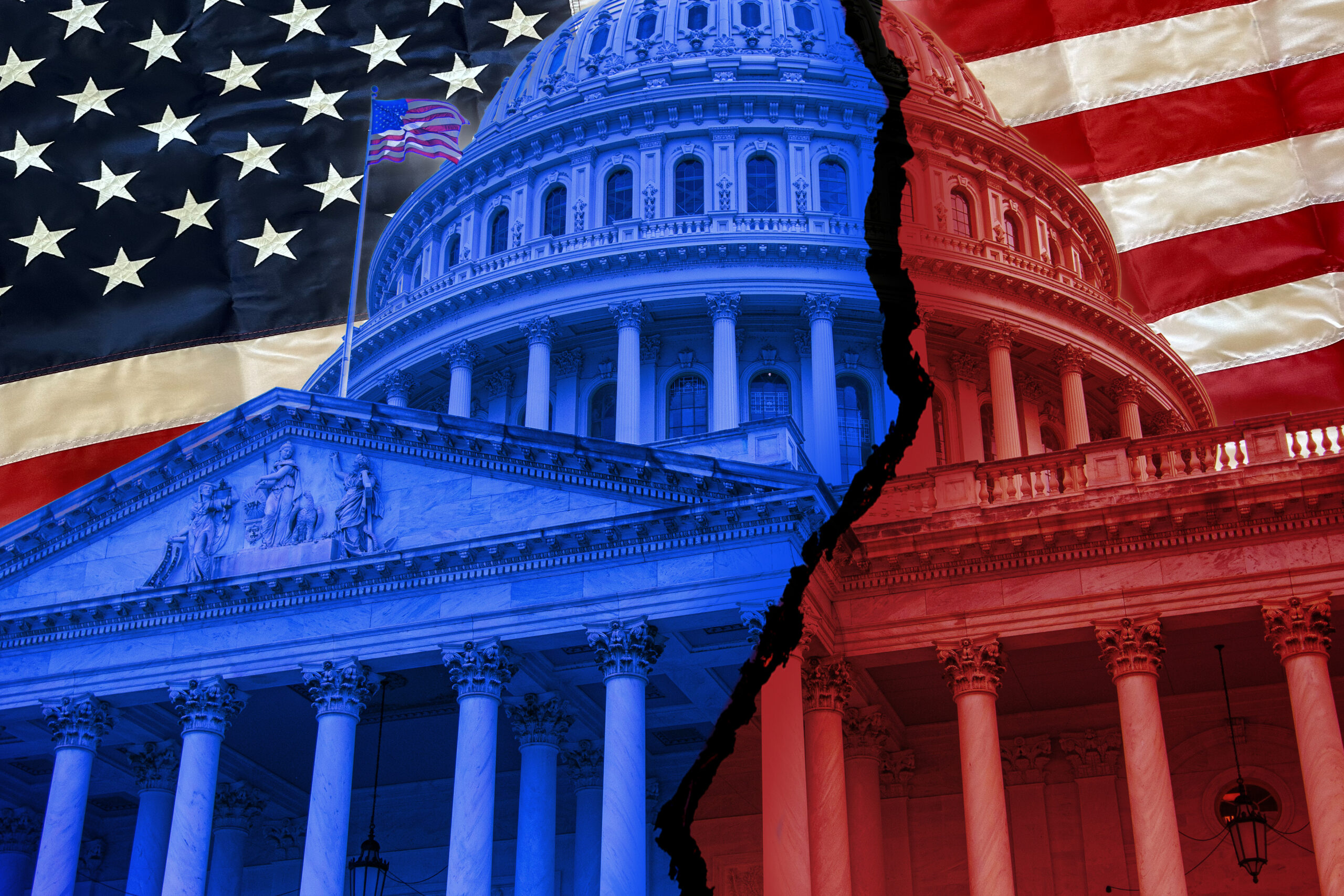💡 Key Takeaways
- The Big Beautiful Bill extends Trump-era tax cuts with new deductions for tips, overtime, and seniors.
- It expands family benefits, including a higher child tax credit and new “Trump Accounts” for kids born 2025–2028.
- The bill boosts small businesses with a permanent 20% QBI deduction, expanded expensing, and full bonus depreciation.
- Taxpayers should expect tightened Medicaid/SNAP eligibility and changes to student loan repayment with borrowing caps.
What Is the Big Beautiful Bill?
In early July, President Trump signed his signature legislation into law – the One Big Beautiful Bill Act. A sweeping tax reform package nicknamed “Trump’s Big Beautiful Bill,” it extends and expands key parts of the 2017 Trump tax cuts. It also introduces new deductions and tax relief programs for working Americans and U.S. businesses. This income tax bill of 2025 introduces changes to federal income tax rates, expands deductions for tipped workers and hourly employees, increases the child tax credit, and modifies business depreciation rules. The bill also makes several changes to federal student loans and funding for Medicaid and Medicare programs. With implementation staggered between 2025 and 2028, many taxpayers will begin to see changes when filing their 2025 returns in 2026. Many taxpayers will see immediate tax benefits, but may face long-term trade-offs. If you’re wondering how Trump’s Big Beautiful Bill will affect you and your family, we have assessed the overall impact on people of different income levels below.
The Big Beautiful Bill Tax Changes by Income
Low-Income Households
Taxpayers with lower earnings benefit from the expanded child tax credit, new above-the-line deductions for tips and overtime pay, and the auto loan interest deduction. However, stricter work requirements for Medicaid and the Supplemental Nutrition Assistance Program (SNAP) could offset some of these gains for those relying on public assistance. Above-the-line deductions can be taken in addition to the standard deduction, making them particularly beneficial.
Middle-Income Earners
Households earning between roughly $50,000 and $150,000 will see significant relief from the increased SALT deduction cap, senior deduction (if applicable), and family-related credits. Many of these taxpayers will also benefit from business pass-through deductions if they are self-employed.
Upper-Middle Income ($150,000–$500,000)
These filers will benefit from the higher SALT cap of $40,000 and extended deductions for overtime and tips up to the income phase-out limits. Married couples filing jointly will see increased thresholds for many deductions.
High-Income Households (Over $500,000)
High earners will experience limited benefits from personal tax changes due to phase-outs, but may gain from business-related provisions such as permanent bonus depreciation and expanded Section 179 expensing. While the immediate tax relief may help with current expenses, long-term trade-offs could include higher taxes in future years as certain provisions phase out. It’s important to review the updated tax brackets and new deductions that could affect your future filings. Understanding these nuances is key to fully grasping the financial impact of Trump’s tax bill over time. The Big Beautiful Bill will make tax changes for people of all income levels. Its impact on specific groups, from working-class families to large corporations, is explored below.
Big Beautiful Bill Tax Impact by Demographic
Impact on Working-Class Americans
One of the most widely publicized aspects of Trump’s new tax bill is the introduction of above-the-line deductions for both tipped income and overtime pay. Under the big beautiful bill, workers earning tips can deduct up to $25,000 of qualified tip income from their taxable income. Similarly, hourly workers who log overtime hours may deduct up to $12,500 in additional earnings. These changes provide significant tax relief for service industry employees and workers who rely on inconsistent or performance-based pay. Remaining in effect through 2028, these tax code changes can benefit working-class Americans for several years.
Retirees and Seniors
The Trump administration prioritized helping older Americans by making major Social Security changes. While the federal government was unable to eliminate taxes on Social Security, this bill did create a new $6,000 deduction for individuals aged 65 and older. This additional tax relief helps them retain more of their income—the deduction phases out above $75,000 for single filers and $150,000 for joint filers. Some fiscal analysts have raised concerns about the deficit impact of this tax break, which could influence the future of entitlement programs.

Married Couples and Joint Filers
Trump’s new law makes joint filing more attractive through increased phaseout thresholds and expanded deduction eligibility. Married couples can now claim up to $25,000 in overtime tax deductions and qualify for the full car loan interest deduction at income levels up to $200,000. In addition, the child tax credit increase and above-the-line charitable deductions provide further benefits to middle-income households. These family-friendly tax reforms are central components of this income tax bill for 2025.
Families with Children
Families with dependents are among the biggest beneficiaries of the big beautiful bill passed in 2025. The child tax credit was increased to $2,200 per child starting in tax year 2025, with $1,700 of it refundable. Adjusted for inflation beginning in 2026, the credit will continue to increase with rising costs of living. Moreover, the bill introduces the creation of “Trump Accounts” for children born between 2025 and 2028. These tax-advantaged investment accounts receive a $1,000 government seed contribution and allow families to contribute up to $5,000 per year in post-tax income. Withdrawals are tax-free when used for education, housing, or dependent care.
Small Businesses
For small businesses, the One Big Beautiful Bill Act restores immediate expensing of domestic R&D costs and makes permanent the 20% Qualified Business Income (QBI) deduction. Additionally, Section 179 expensing limits increase to $2.5 million, with a $4 million phaseout, enabling more capital investment and faster asset depreciation. These tax changes in Big Beautiful Bill provisions provide liquidity and planning advantages, especially for sole proprietorships, LLCs, and other pass-through entities.
Big Businesses
Corporations benefit from the return of 100% bonus depreciation and a more flexible depreciation schedule for qualified production property. However, corporate charitable contribution rules are revised: deductions are now only allowed on amounts exceeding 1% of taxable income, though the overall 10% limit remains. While large companies see tax relief on investment and production, they may face reduced flexibility in philanthropic accounting.
Students and Education Borrowers

The Big Beautiful Bill also makes significant changes to student loan programs. Beginning July 1, 2026, borrowers will be limited to two repayment plans: a simplified standard plan and the Repayment Assistance Plan (RAP). Older plans such as SAVE, PAYE, and ICR will sunset. Graduate and Parent PLUS loans face new caps: graduate students can borrow $20,500 annually (or $50,000 for professional degrees), and parents face a $20,000/year cap per child. These student loan changes aim to reduce overall debt levels but may limit flexibility for future students.
Low-Income Households and Public Assistance Recipients
The Big Beautiful Bill medicaid impact and SNAP changes include stricter work requirements. Medicaid beneficiaries aged 19-64 must work at least 80 hours per month beginning December 31, 2026, with biannual eligibility reviews. Similarly, SNAP eligibility now extends work requirements to childless adults up to age 65 and those with dependents aged 14 or older. While these changes are positioned as efforts to promote workforce participation, they may create new challenges for people who cannot find work or are unable to work.
Environmental and Energy Policy Impacts
The legislation phases out clean energy incentives introduced under the Inflation Reduction Act. Credits for clean vehicle purchases will end after September 30, 2025, and energy-efficient home improvement credits expire at the end of 2025. Although there are no direct Medicare impact provisions, environmental advocates express concern about the healthcare impact of slower clean energy adoption.
Conclusion
In summary, Trump’s new tax bill provides significant tax relief while reshaping public benefit programs and student loan structures. As more provisions roll out in the coming years, staying informed on how these tax changes affect your household or business will be critical. If you owe tax debt to the IRS and need help navigating changing tax laws, sign up for a free tax consultation with TaxRise. During this call, you’ll discover if you qualify for any of the tax relief programs and which options are best for your needs. TaxRise has helped thousands of taxpayers resolve their tax issues and reduce their tax debts. Book your call today and start focusing on enjoying your life, without the stress of tax concerns.
Frequently Asked Questions
The One Big Beautiful Bill Act includes income tax relief for working-class Americans, expanded deductions for seniors and families, business tax breaks, new savings programs, and changes to public assistance and student loan programs.
Tax cuts include above-the-line deductions for tips and overtime pay, an expanded child tax credit, auto loan interest deductions, and new senior and charitable giving deductions. Business tax cuts include full expensing for R&D and bonus depreciation.
Most income tax provisions begin with the 2025 tax year (filed in 2026). Other elements, like Medicaid work requirements and student loan changes, begin in late 2026 and 2027.
No. The bill is tax and policy legislation and does not directly change election laws or voting rights.









0 Comments